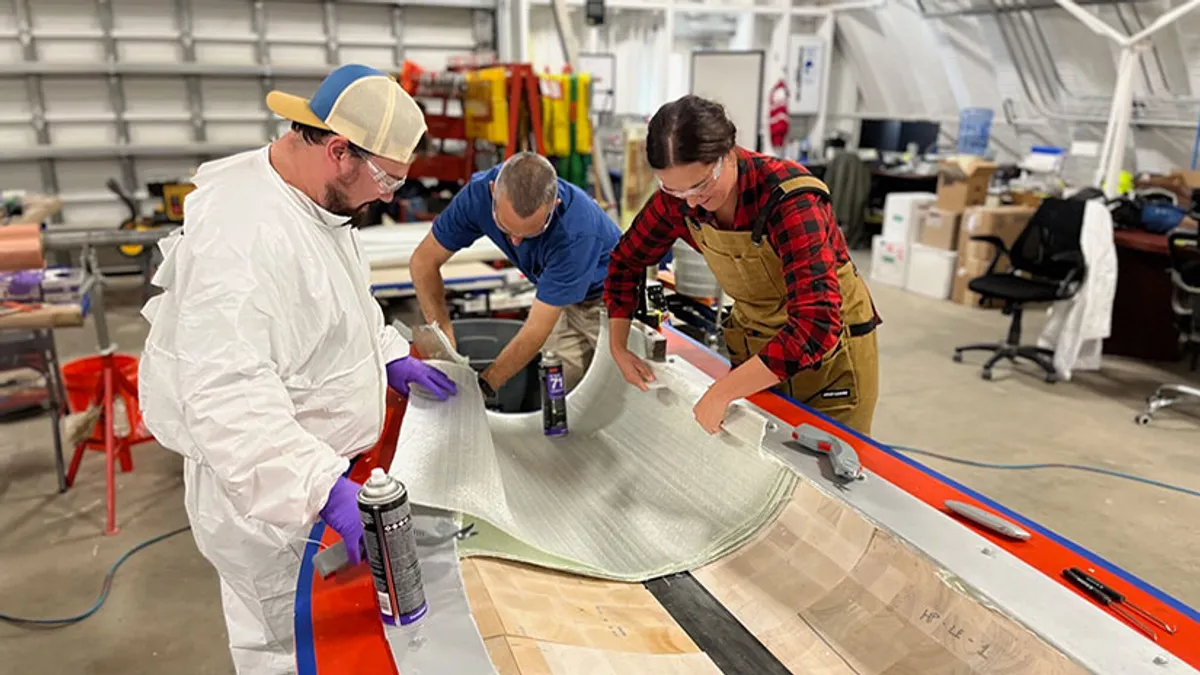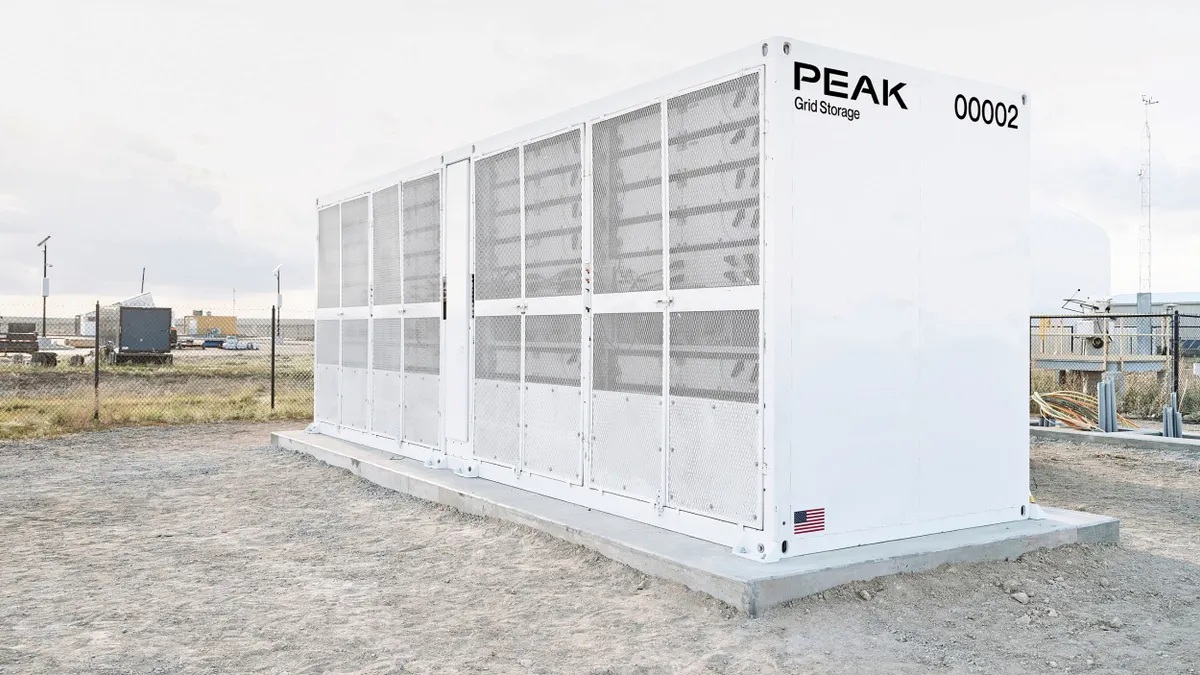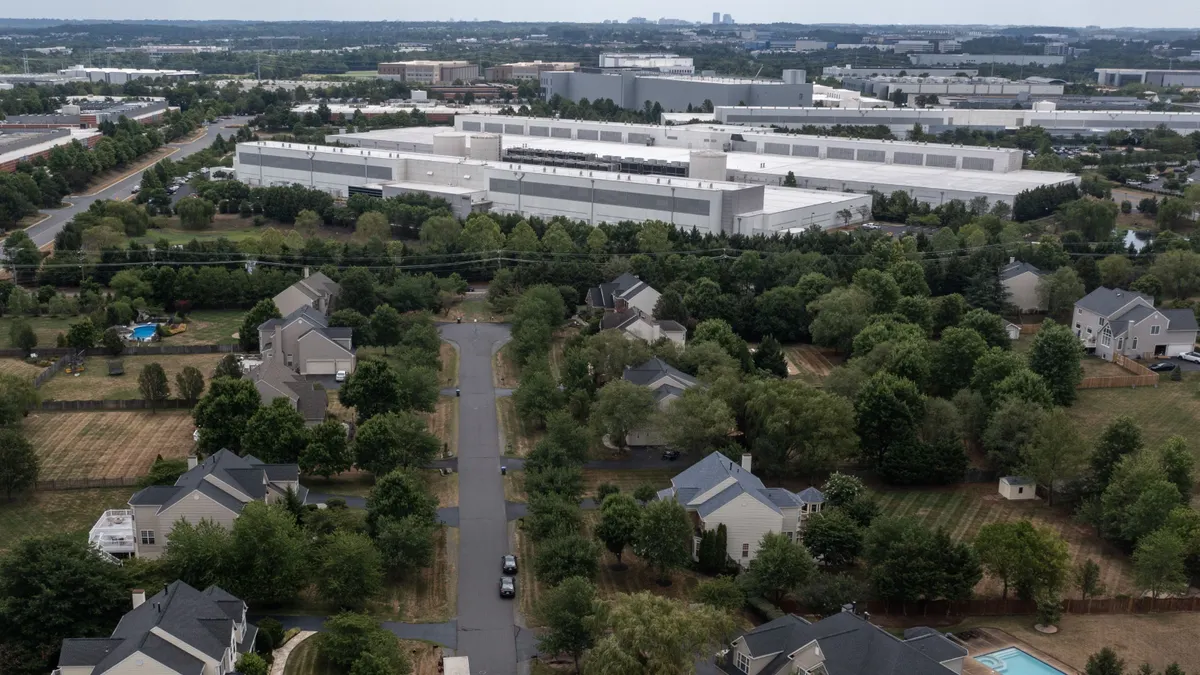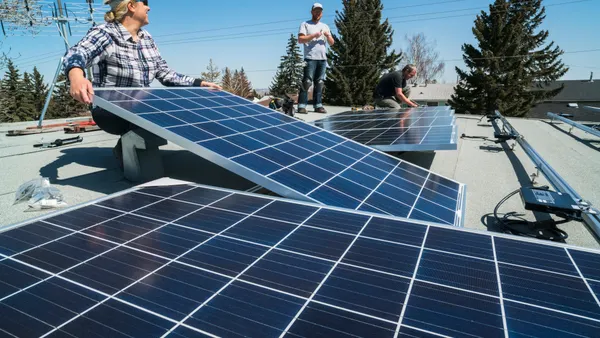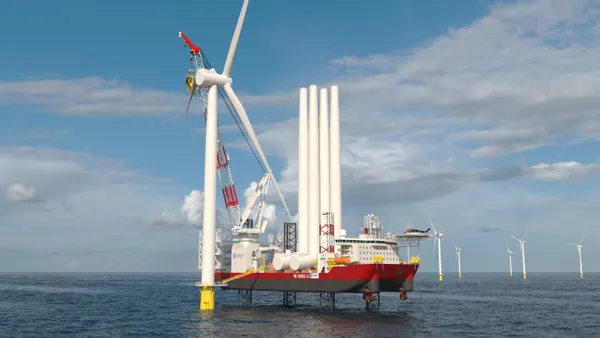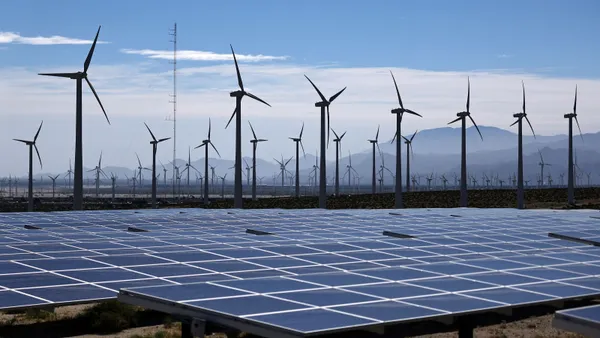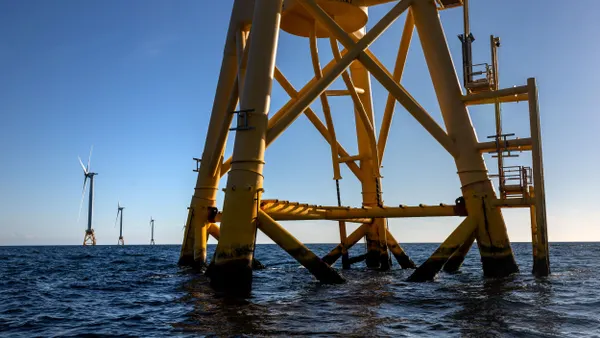Around 90% of the mass of a decommissioned wind turbine is made up of recyclable steel and concrete, which have well-established recycling chains, says a Monday report released by the Department of Energy — but the remaining 10% will require “new strategies and innovative recycling methods.”
“Towers, foundations, and steel-based subcomponents in drivetrains offer the greatest potential currently to be successfully recycled, whereas blades, generators, and nacelle covers are likely to prove more difficult,” DOE said in a release. “Recovering critical materials and alloying elements from generators and power electronics, such as nickel, cobalt, and zinc, will be crucial in establishing a circular economy for wind systems.”
The report suggested a combination of measures to improve recyclability, including:
- “Improved end-of-life decommissioning collection and scrap sorting practices.
- Strategic siting of recycling facilities.
- Expanded and improved recovery and recycling infrastructure.
- Substitution of hard-to-recycle and critical materials with more easily separable and affordable materials, improved component designs and manufacturing techniques, or the development of modular system components.
- Optimized properties of recovered materials for second-life applications.
- Greater access to wind energy waste streams and the equipment required to disassemble wind energy components.”
The report was conducted by a team of researchers led by DOE’s National Renewable Energy Laboratory, with support from Oak Ridge National Laboratory and Sandia National Laboratories, DOE said. It is meant to support the DOE’s Wind Energy Recycling Research, Development, and Demonstration program.
Blade recycling has consistently been a barrier to a circular economy for wind energy due to blades including epoxy resins, which require the use of nonrenewable resources like petroleum to create and are almost impossible to break down and reuse. In 2023, NREL researchers announced promising initial results from a prototype blade that used plant-based resin.
DOE’s release said that some short-term strategies for decommissioning wind turbines include blade production that uses more easily recyclable thermoplastic resins, and reusing those resins in cement production.
“Thermoplastic-based blade recycling technologies, such as pyrolysis and chemical dissolution, could be viable medium- and long-term options,” DOE said. “Other medium- and long-term solutions include high-yield techniques for separating compounds found in power electronics and hybrid methods for recycling permanent magnets.”
In the report, the researchers suggest the use of bio-based fibers and resins in blades as a long-term solution for deployment in 2035 and beyond.
“Researchers estimate that up to 30% of the total U.S. recycling capacity for copper and aluminum in 2021 could be occupied by wind energy systems by 2040,” the report said. “Therefore, the nation could benefit from expanding its production and subsequent recycling infrastructure for these materials.”



